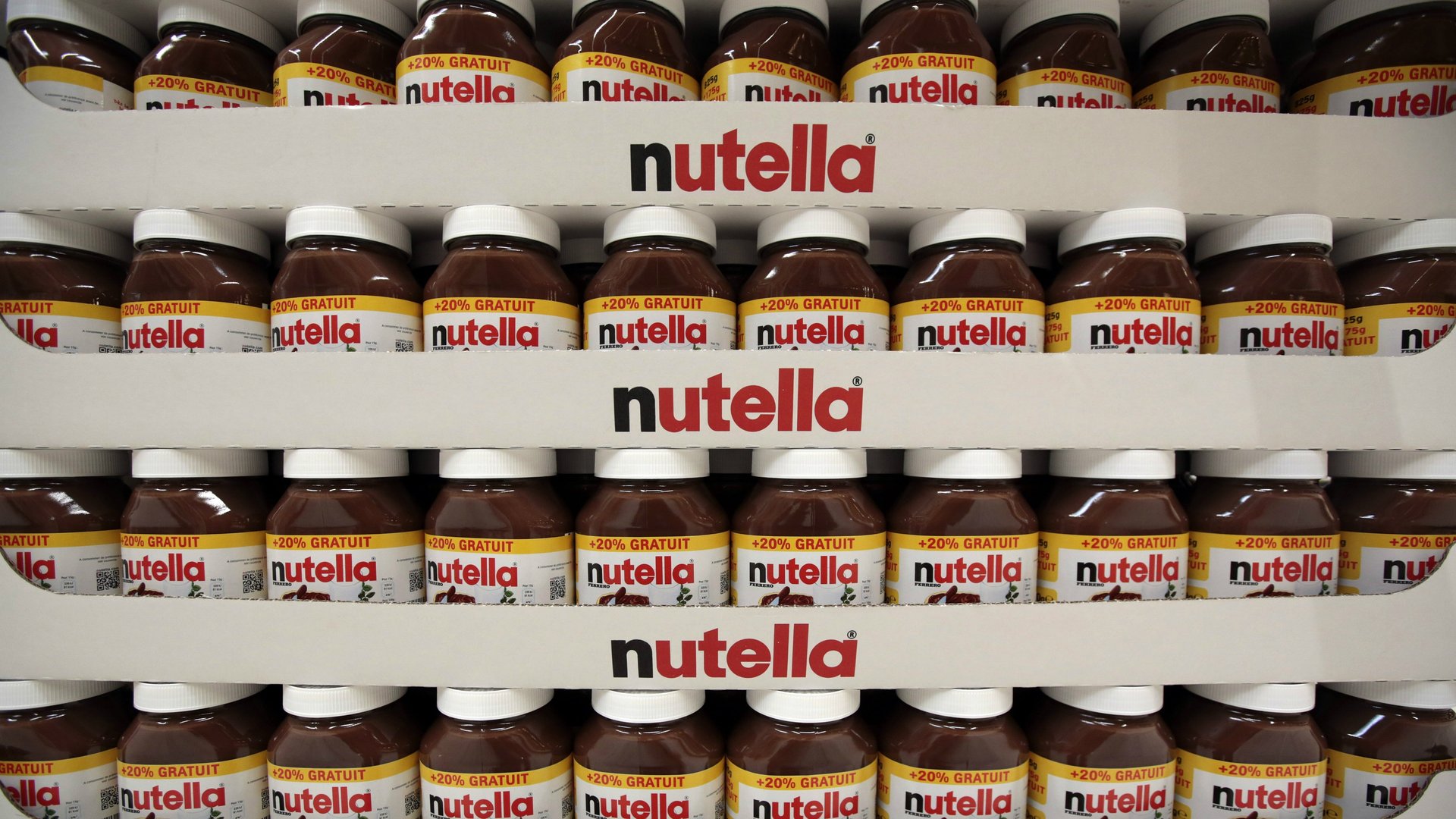The FDA wants to know how much Nutella you are actually eating
It’s been a joyful practice for decades, blithely administering generous glops of Nutella onto foods for snacking. But now the US government wants to get involved.


It’s been a joyful practice for decades, blithely administering generous glops of Nutella onto foods for snacking. But now the US government wants to get involved.
Just how much Nutella is too much Nutella for a single snack? That’s the question the US Food and Drug Administration is seeking to answer, and it’s looking to gather input from the public.
In May, the FDA updated its overarching serving size policy after more than two years of collecting and analyzing nutrition data, eating habit surveys, and public comments. But after reading over the new policy, Ferrero Rocher, the company that manufactures Nutella, asked the government to make a few tweaks.
Because Nutella and other nut-based cocoa spreads are considered “dessert toppings” by the government, they have to list higher serving sizes on their packaging. But Ferrero argues that Americans no longer primarily use Nutella on ice creams or with cookies, but instead on toast and sandwiches. So it’s asking the FDA to consider creating a brand new category for nut-based cocoa spreads or at the least categorize it as a “honey, jam, and jelly.”
That’s because when the government updated its policy in May, it made the controversial decision to force food companies to label the amount of added sugars in their products and a percent daily value of those sugars in a single serving.
In the “dessert topping” category, Nutella would have to list a serving size of 2 tablespoons; in the “honey, jams, and jellies” category, a serving size would be 1 tablespoon instead. The “added sugar” amount would, of course, drop in correspondence with serving size. Practically speaking, that difference could be enough to make Nutella more appealing for shoppers making decisions based on the newly added sugar labeling.
The makers of Nutella submitted to the government its own survey of 722 mothers who’d purchased the spread within a three-month span. That survey found that 74% of the time the mothers were using Nutella, they put it on toast and sandwiches, and 2% of use was as an ice cream topping. The company also hired a scientific consulting firm to dig through government nutrition data from 2003 to 2012, and they found that 47% of Nutella use was as a spread on toast compared to only 17% on cookies. About 14% of use was people eating Nutella on its own.
“Ferrero’s most recent advertising and promotion has advocated the consumption of a balanced breakfast with the inclusion of Nutella as a tasty, complementary spread to add on to nutrient-rich whole grain breads, fruit, and dairy products,” the company’s letter to the government reads.
The origin of the chocolatey spread can be traced back to the food rationing days in Europe following World War II. Back then, it was mostly marketed as an affordable, nutritious spread for toast. The product hit the US in the 1980s, and quickly gained a loyal following.
Because nut-based chocolate spreads like Nutella weren’t typically consumed in the US until the 1970s and 1980s, the government didn’t include them in consumption data until 1993, after Ferrero approached the FDA to begin tracking consumption of Nutella like the agency was for other food products. Back then, more people were using the spread as an ice cream topping than a spread for toast, according to a survey the company provided the government in the 1990s.
But it appears those habits have changed, and the company thinks that should allow its labeling to change, too.